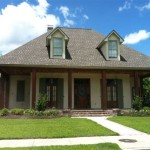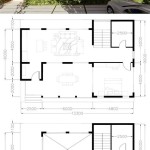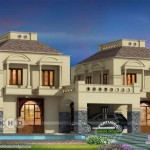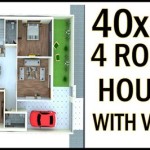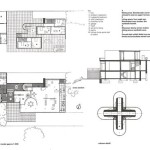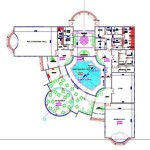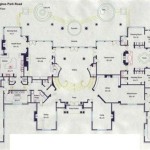House Plans With Sunroom Off Kitchen: A Guide to Integrated Living
The integration of a sunroom directly off the kitchen is becoming an increasingly popular design choice in modern home construction and renovation. This architectural configuration offers a multitude of benefits, seamlessly blending indoor and outdoor living while creating a functional and aesthetically pleasing space. The strategic placement of a sunroom adjacent to the kitchen maximizes natural light, provides an additional area for dining or relaxation, and enhances the overall flow of the home. Understanding the key considerations and design possibilities associated with this concept is crucial for homeowners and builders alike.
The success of a house plan incorporating a sunroom off the kitchen hinges on careful planning and execution. Aspects such as the orientation of the house, the size and style of the sunroom, the materials used in its construction, and the connection between the two spaces must be thoroughly assessed. A well-designed sunroom can significantly increase the value and enjoyment of a home, offering a versatile space for various activities throughout the year.
Optimizing Natural Light and Solar Gain
One of the primary advantages of a sunroom is its ability to maximize natural light and solar gain. A sunroom situated off the kitchen can flood both spaces with sunlight, creating a bright and inviting atmosphere. The orientation of the house plays a crucial role in determining the amount of sunlight the sunroom will receive. A south-facing sunroom will typically receive the most sunlight throughout the day, particularly during the winter months. This can help to reduce heating costs and create a warm and comfortable environment. East-facing sunrooms are ideal for morning sunlight, while west-facing sunrooms will capture the afternoon sun. North-facing sunrooms receive indirect sunlight, which can be beneficial in warmer climates.
The design of the sunroom's roof and windows also influences the amount of natural light that enters the space. A glass roof or skylights can dramatically increase the amount of sunlight, but they can also contribute to excessive heat gain in the summer. Windows should be strategically placed to capture the maximum amount of sunlight while minimizing glare and heat loss. Low-emissivity (Low-E) glass is a popular choice for sunroom windows because it helps to reduce heat transfer and UV radiation. The use of window treatments, such as blinds or shades, can also help to control the amount of sunlight and heat that enters the sunroom.
Furthermore, the color scheme and materials used in the sunroom can affect its brightness. Light-colored walls and flooring will reflect more light, making the space feel brighter and more open. Natural materials, such as wood and stone, can add warmth and texture to the sunroom, while also complementing the natural light. Careful consideration of these factors will ensure that the sunroom is a bright and welcoming space that is comfortable to use throughout the year.
Creating a Seamless Transition Between Kitchen and Sunroom
The connection between the kitchen and the sunroom should be seamless and inviting. This involves careful consideration of the layout, the materials used, and the architectural details. An open-concept design, where the kitchen and sunroom flow together without a physical barrier, is a popular choice. This creates a sense of spaciousness and allows for easy interaction between the two spaces. However, some homeowners may prefer a more defined separation, such as a partial wall or a set of French doors. The choice depends on individual preferences and the desired level of privacy and noise reduction.
The flooring materials used in the kitchen and sunroom should be compatible and visually appealing. Hardwood, tile, and stone are all common choices for both spaces. To create a seamless transition, it is often recommended to use the same flooring material in both the kitchen and the sunroom. Alternatively, a complementary flooring material can be used to define the two spaces while maintaining a cohesive look. For example, a hardwood floor in the kitchen could transition to a tile floor in the sunroom, with a similar color palette. The use of area rugs can also help to define the spaces and add warmth and texture.
Architectural details, such as trim, molding, and lighting, can further enhance the connection between the kitchen and the sunroom. Using similar trim and molding in both spaces will create a sense of continuity. Lighting fixtures should be chosen to complement the overall design and provide adequate illumination for both spaces. Pendant lights over a kitchen island can be replicated in the sunroom to create a visual connection. The addition of plants and greenery can also help to blur the lines between the indoor and outdoor spaces, creating a more natural and inviting environment.
Utilizing the Sunroom as a Multifunctional Space
A sunroom off the kitchen can serve a variety of purposes, depending on the homeowner's needs and lifestyle. It can be used as an extension of the kitchen, providing additional dining space or a breakfast nook. It can also be used as a relaxation area, with comfortable seating and a serene atmosphere. Some homeowners may choose to use the sunroom as a greenhouse, growing plants and herbs. Others may use it as a home office or a playroom for children. The versatility of a sunroom makes it a valuable addition to any home.
When planning the use of the sunroom, it is important to consider the furniture and accessories that will be needed. If the sunroom is to be used as a dining area, a table and chairs will be necessary. Comfortable seating, such as sofas and armchairs, will be needed for a relaxation area. Storage solutions, such as shelves and cabinets, can be used to organize plants, books, or other items. The furniture should be chosen to complement the overall design of the kitchen and sunroom and to provide comfort and functionality.
The addition of appliances, such as a small refrigerator, a wine cooler, or a sink, can further enhance the functionality of the sunroom. A small refrigerator can be used to store drinks and snacks, while a wine cooler can be used to store wine at the perfect temperature. A sink can be used for washing vegetables or other tasks related to gardening. These appliances can make the sunroom a more convenient and enjoyable space to use.
Furthermore, the incorporation of technology can enhance the sunroom's usability. Installing outlets for charging electronic devices and a sound system for music can make the space more functional and enjoyable. Smart home technology can also be integrated to control lighting, temperature, and other aspects of the sunroom. Ultimately, the functionality and features of the sunroom should be tailored to the individual needs and preferences of the homeowner.
Integrating a sunroom with a kitchen requires consideration of structural integrity. The wall separating the kitchen and potential sunroom is often load-bearing. Removing or altering a load-bearing wall necessitates professional structural engineering consultation to ensure the structural integrity of the house is maintained. This often involves installing a beam or other support system to redistribute the load. Ignoring this aspect can lead to serious structural problems in the future.
Ventilation is another crucial factor to address when planning a sunroom off the kitchen. Kitchens produce heat, moisture, and odors, and the sunroom can trap these elements if ventilation is inadequate. Proper ventilation systems, such as exhaust fans or operable windows, are essential to maintain air quality and prevent mold growth. Cross-ventilation, which involves opening windows on opposite sides of the sunroom, is an effective way to promote airflow. Another option is to install a ceiling fan to circulate air and prevent stagnant pockets.
The choice of materials for the sunroom should complement both the kitchen and the exterior of the house. Consider the overall architectural style and select materials that are consistent with the existing design. For example, if the house has a modern aesthetic, consider using glass and metal in the sunroom. If the house has a more traditional style, consider using wood and stone. The materials should also be durable and weather-resistant, especially in areas prone to extreme temperatures or inclement weather. Properly sealed windows and doors are crucial to prevent drafts and water damage.
Finally, compliance with building codes and regulations is essential. Obtain the necessary permits before starting construction to ensure that the sunroom meets all applicable requirements. This may involve submitting plans to the local building department and undergoing inspections during and after construction. Failure to comply with building codes can result in fines, delays, and even the removal of the sunroom. Consulting with a qualified contractor or architect can help to navigate the permitting process and ensure that the project is completed safely and legally.

House Plans With Sunrooms Or 4 Season Rooms

House Plans With Sunrooms Or 4 Season Rooms
.webp?strip=all)
One Story Home Plan With Sunroom 4746

Split Bedroom Ranch Design With Sunroom 62024v Architectural Designs House Plans

House Plans With Solarium Or Sun Room Drummond

One Story Home Plan With Sunroom 4746

Hillside Walkout Craftsman Home Plan With Sunroom Off Master Suite 444220gdn Architectural Designs House Plans

Sunroom Off Of Kitchen Dining Room

Cur And Future House Floor Plans But I Could Use Your Input Addicted 2 Decorating

Modern Farmhouse Abigail Home Additions Sunroom Designs Interior

